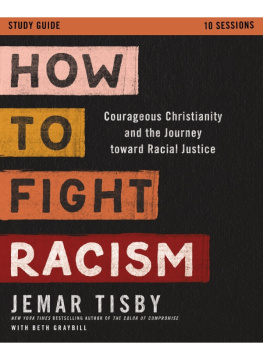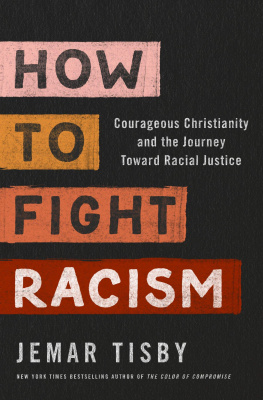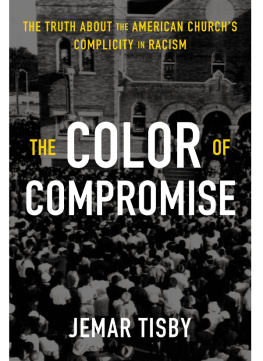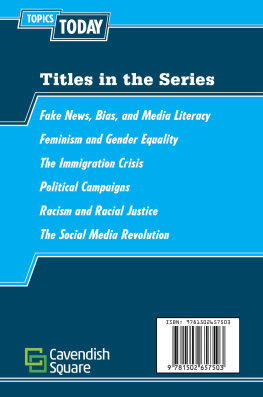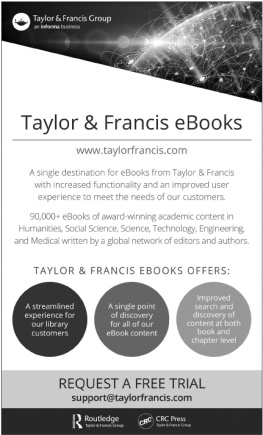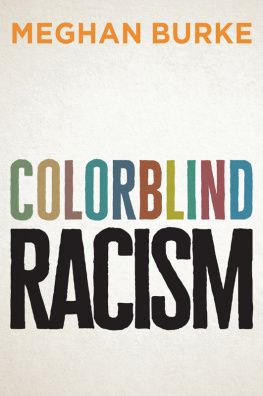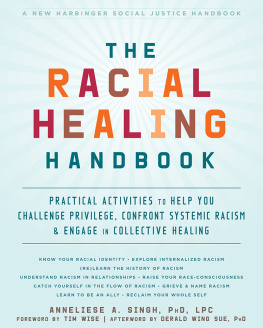ZONDERVAN REFLECTIVE
How to Fight Racism Study Guide
Copyright 2021 by Jemar Tisby
Requests for information should be addressed to:
Zondervan, 3900 Sparks Dr. SE, Grand Rapids, Michigan 49546
Zondervan titles may be purchased in bulk for educational, business, fundraising, or sales promotional use. For information, please email SpecialMarkets@Zondervan.com.
ePub Edition February 2021 : ISBN 978-0-310-11323-2
All Scripture quotations, unless otherwise indicated, are taken from The Holy Bible, New International Version, NIV. Copyright 1973, 1978, 1984, 2011 by Biblica, Inc. Used by permission of Zondervan. All rights reserved worldwide. www.Zondervan.com. The NIV and New International Version are trademarks registered in the United States Patent and Trademark Office by Biblica, Inc.
Scripture quotations marked ESV are taken from the ESV Bible (The Holy Bible, English Standard Version). Copyright 2001 by Crossway, a publishing ministry of Good News Publishers. Used by permission. All rights reserved.
Scripture quotations marked NASB are taken from the New American Standard Bible. Copyright 1960, 1962, 1963, 1968, 1971, 1972, 1973, 1975, 1977, 1995 by The Lockman Foundation. Used by permission. (www.Lockman.org).
Any internet addresses (websites, blogs, etc.) and telephone numbers in this book are offered as a resource. They are not intended in any way to be or imply an endorsement by Zondervan, nor does Zondervan vouch for the content of these sites and numbers for the life of this book.
All rights reserved. No part of this publication may be reproduced, stored in a retrieval system, or transmitted in any form or by any meanselectronic, mechanical, photocopy, recording, or any otherexcept for brief quotations in printed reviews, without the prior permission of the publisher.
Cover Design: Faceout Studio
Cover Photo: Shutterstock
Interior Design: Kait Lamphere
21 22 23 24 25 26 27 28 29 30 31 / LSC / 15 14 13 12 11 10 9 8 7 6 5 4 3 2 1
Information about External Hyperlinks in this ebook
Please note that footnotes in this ebook may contain hyperlinks to external websites as part of bibliographic citations. These hyperlinks have not been activated by the publisher, who cannot verify the accuracy of these links beyond the date of publication.
In this ebook edition, please use your devices note-taking function to record your thoughts wherever you see the bracketed instructions [Your Notes] or [Your Response Here]. Use your devices highlighting function to record your response whenever you are asked to checkmark, circle, underline, or otherwise indicate your answer(s).
CONTENTS
H ello, friend! Welcome to the How to Fight Racism Study Guide. This guide, which includes ten teaching sessions and a conclusion, is meant to be a companion learning experience to my book, How to Fight Racism, and its video study. There is a growing swell of people who recognize the fierce sense of urgency when it comes to fighting racism. The pages of the book contain my answer to the most frequent question I receive about fighting racism: What do we do? This study guide and accompanying video study are designed to prioritize practical ways to answer that question.
This journey toward racial justice is for those who realize racism is a problem nationwide and worldwide and want to be a part of the solution, but also need guidance about what exactly you could be doing as an individual, a church, a community, or an organization to push back against racism. While I believe the journey is open to all, I am convinced that Christians must show up in this fight against racism. This is what I call courageous Christianity. From my point of view, courageous Christianity contrasts with the complicit Christianity that has led so many religious people to perpetuate racism and cooperate with bigotry instead of challenging it. But racial justice comes from the struggle of those who choose to stand against racism courageously rather than to compromise with it. And now is the time for our fellow Christians to be courageous, to dare to love through action, and to risk everything for the sake of justice.
Heres how I propose we live out courageous Christianity in the face of racial injustice. The book and this study are structured around an important model I created called the ARC of Racial Justice. ARC is an acronym that stands for:
1. Awareness
2. Relationships
3. Commitment
In this study, you will learn ways to increase your awareness by studying history, exploring your personal narrative, and grasping what God says about the dignity of the human person. You will also learn to see that you cannot have true racial justice without developing authentic relationships with people who are different from you. And you will learn that building awareness and developing relationships is what enables you to make a commitment to dismantle racist attitudes, structures, laws, and policiesstarting with your heart and moving out to the systems and structures of our nation and our world. This model is grounded in the head-hands-heart metaphor with awareness as the head, relationships as the heart, and commitment as the hands. If were honest, many of us gravitate toward one part of this model more than the whole. Some of us love to devour information to increase our knowledge and awareness through books, articles, and documentaries. Others forge admirable relationships with people from a wide spectrum of backgrounds and experiences. Still others are activists on the front lines of protests and leading campaigns for radical change. While each response is noble, a holistic response to racial justice must include all three aspects: awareness, relationships, and commitment.
The ARC of Racial Justice provides helpful shorthand for a comprehensive approach to racial justice and race reforms. But the point of the model is not to keep all actions equal in number; rather, the goal is to keep all three areas of awareness, relationships, and commitment in conversation and tension with one another. This ensures that no person or organization focuses on one area to the exclusion of the other areas. But the three categories interact in a dance that changes cadence and rhythm according to the music of the moment. This model is not linear, meaning you will not progress from awareness to relationships to commitmentthat sounds more like a recipe than a dance. My hope is you will grow in each area, knowing at times that one racial justice practice will build your capacity to fight racism in multiple areas of life.
Here is the truth: the process of growing in awareness, relationships, and commitment never ends. Racial justice is a journey without a finish line, and fighting racism is an ongoing series of steps and stops along the way. Not all of us will have the same starting point or the same speed on this journey. But the eventual destination is crucial: racial equity and justice for all people of every racial and ethnic background. This is where harmony and unity will prevail in the midst of diversity. And I believe success on this journey is defined by the actions we take rather than the results we achieve. Lets begin this journey together.
Jemar Tisby
T he How to Fight Racism Video Study

